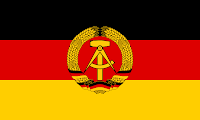
Here's a bit about my past:
When I was born, I was born in Riverside, California, but my parents lived in the neighboring community of Sunnymead (which is now part of the city of Moreno Valley... like many things in my life, much of where I lived isn't there anymore... which I personally find fascinating!)
My dad worked in migrant agriculture, working for the Davis Brothers Produce Company. He moved wherever the potato crop was going.
The moving got to be too hectic for him, so after my sister was born in December 1958, he was given a job that would keep him in one spot, the
Victoria Guernsey Dairy in San Bernardino. There were actually two dairies. One was on Base Line Street in Highland. The other was at the corner of Ninth Street and Waterman Avenue. He worked at the latter and they let us park our trailer house there. As a toddler, I spent a lot of time on the fence behind my house, watching calves get born. My dad often took me with him on trips he made in a huge
International Harvester combine truck, which was used for everything from feeding the cows, to picking up orange juice at the
Vita-Pakt plant in Covina, to taking cows that wouldn't produce milk to the slaughterhouse. Yes, I did get to see the cows get killed. I still remember what I saw. And, no, I'm not a vegetarian.
Dad got tired at being at the beck and call of the dairy. When a job for experienced workers were called for the Santa Fe Railroad in 1961, the first thing he did was go to the hardware store and bought every tool the job announcement said he was supposed to have, plus a toolbox. Then he left the tools out in the rain one night to get some "patina." The next morning, he carefully dried them, but they didn't look new anymore. He went to the interview with his toolbox and was one of the first men hired.
At first, we moved to Corona (which neighbors Riverside) and he lived during the week in an outfit car (an old passenger coach turned into a rooming house) in San Diego. Later, we moved to San Diego, where my brother was born in 1962. (We lived there from late 1961 to August 1962... then we moved up the road to Oceanside...)
So now you know more about my past...
Victoria Guernsey quit producing milk in the early 1970s. The place where my family used to live became a
Kmart store in about 1973. Then it went out of business and many businesses have occupied that spot since that time...
 As I have often said, "Name changes don't happen for nothing." A credit card began in 1966 as a competitor for the BankAmericard. It was the official credit card for a group of banks known as the Interbank Card Association. The banks included:
As I have often said, "Name changes don't happen for nothing." A credit card began in 1966 as a competitor for the BankAmericard. It was the official credit card for a group of banks known as the Interbank Card Association. The banks included:














